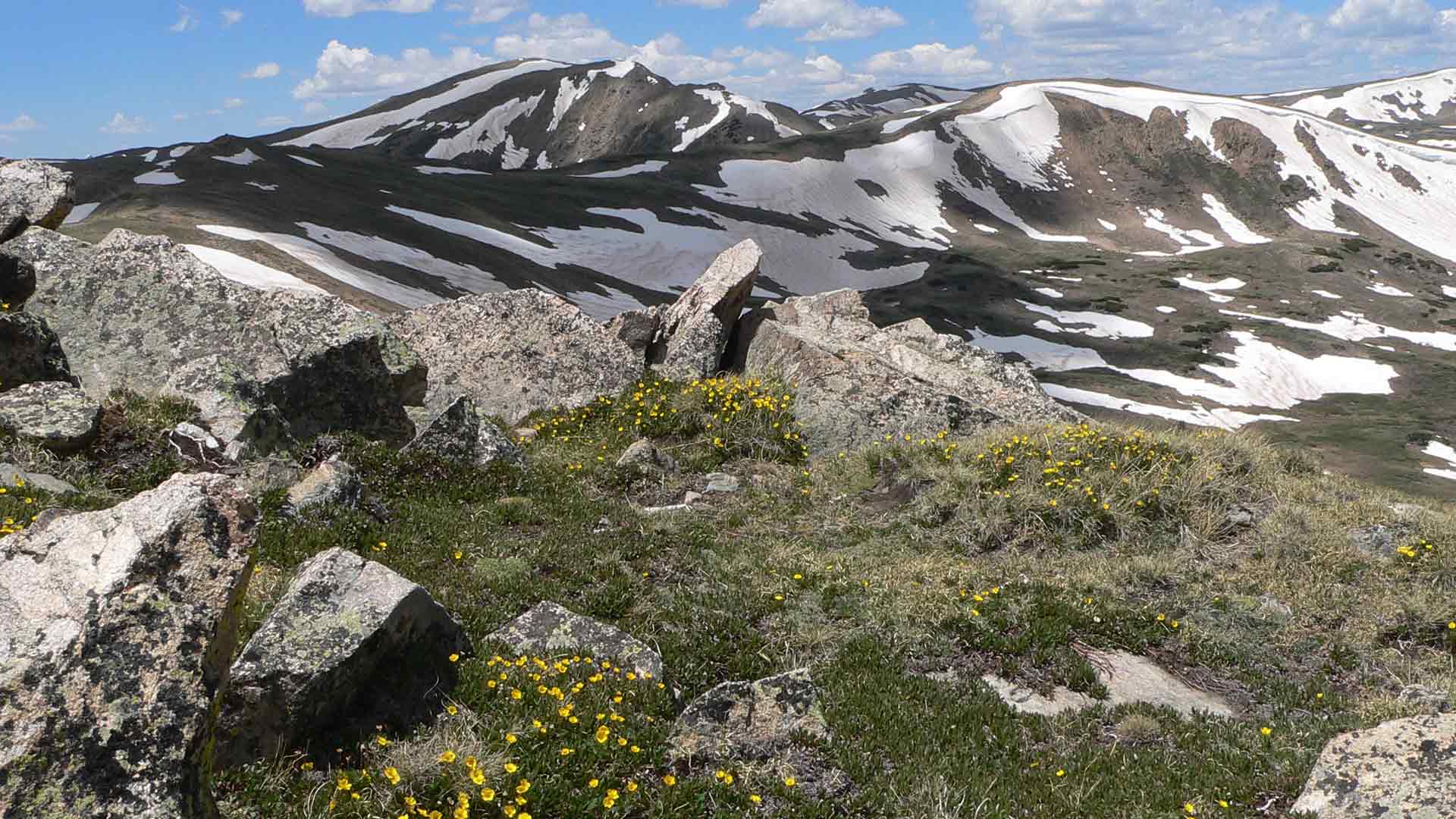Rocky Mountain Alpine Turf Plant Community
Loveland Pass, Summit County
Summary
The Alpine Turf Plant Community can be thought of as an ecological successor of the Alpine Fellfield – Cushion Plant Community previously described in this Alpine Life Zone section. That plant community was described as having gravelly soil with particles broken down just enough to allow plants to grow, but containing virtually no organic matter. Inorganic soil is unable to retain much water, so plants living there are dwarf-sized and have long taproots which penetrate deeply in search of water.
Alpine Fellfields can remain stable for hundreds of years, but if the conditions are right, soil containing humus will gradually develop over a period of many hundreds of years. The Alpine Fellfield photo in that section of this website was taken at Summit Lake on Mt. Evans. The Summit Lake Alpine Fellfield Plant Community is located on a relatively flat ridge on the east side of the lake which is open to northerly winds.
However, in the Alpine Turf Community shown here on Loveland Pass, one can see that it is set in a small depression, surrounded by large rocks. This depression allows wind-driven soil to accumulate over time and the large rocks provide protection from the winds, allowing turf creating plants to grow. The location, aspect, and increased moisture from snow melt creates conditions that favor the development of the organic soils found in the turf plant community.
Some Indicator Plants
Click on photo to see full-page lightbox image.
In lightbox, click on X in upper right corner to return here.
Alpine Clover (Trifolium dasyphyllum)
Photo by Loraine Yeatts
Vegetation
The major difference between the fellfield and turf communities is that the turf community is dominated by rhizomatous, sod-forming sedges and perennial grasses.
Some forbes, such as Alpine Clover (Trifolium dasyphyllum), Alpine Avens (Geum rossii var. turbinatum), and Moss Campion (Silene acaulis), may be found in both plant communities, but for the most part the plants in the turf communities must be more competitive to survive the dense grasses and sedges.
The dominant sedges are Blackroot Sedge (Carex elynoides), Bellardi Bog Sedge (Carex myosuroides), Curley Sedge (Carex rupestris), Northern Single Spike Sedge (Carex scirpoidea), and Dry Sedge (Carex siccada).
Dominant grasses are Alpine Fescue (Festuca brachyphylla), Idaho Fescue (Festuca idahoensis), Arctic Bluegrass (Poa arctica), Purple Reedgrass (Calamagrostis purpurascens), and Tufted Hairgrass (Deschampsia cespitosa).
The most common forbes are Alpine Avens (Geum rossii var. turbinatum), Creeping Sibbaldia (Sibbaldia procumbens), Moss Campion (Silene acaulis), Alpine Clover (Trifolium dasyphyllum), Parry’s Clover (Trifolium parryi), Hooker’s Mountain Avens (Dryas hookeriana), Rocky Mountain Spikemoss (Selaginella densa), and Cushion Phlox (Phlox pulvinata).
There are also several species of Goldenrods (Solidago) and Saxifrages (Saxifraga).
REFERENCES
Carex elynoides – Carex rupestris – Kobresia myosuroides Rocky Mountain Alpine Turf Alliance
NatureServe Explorer

